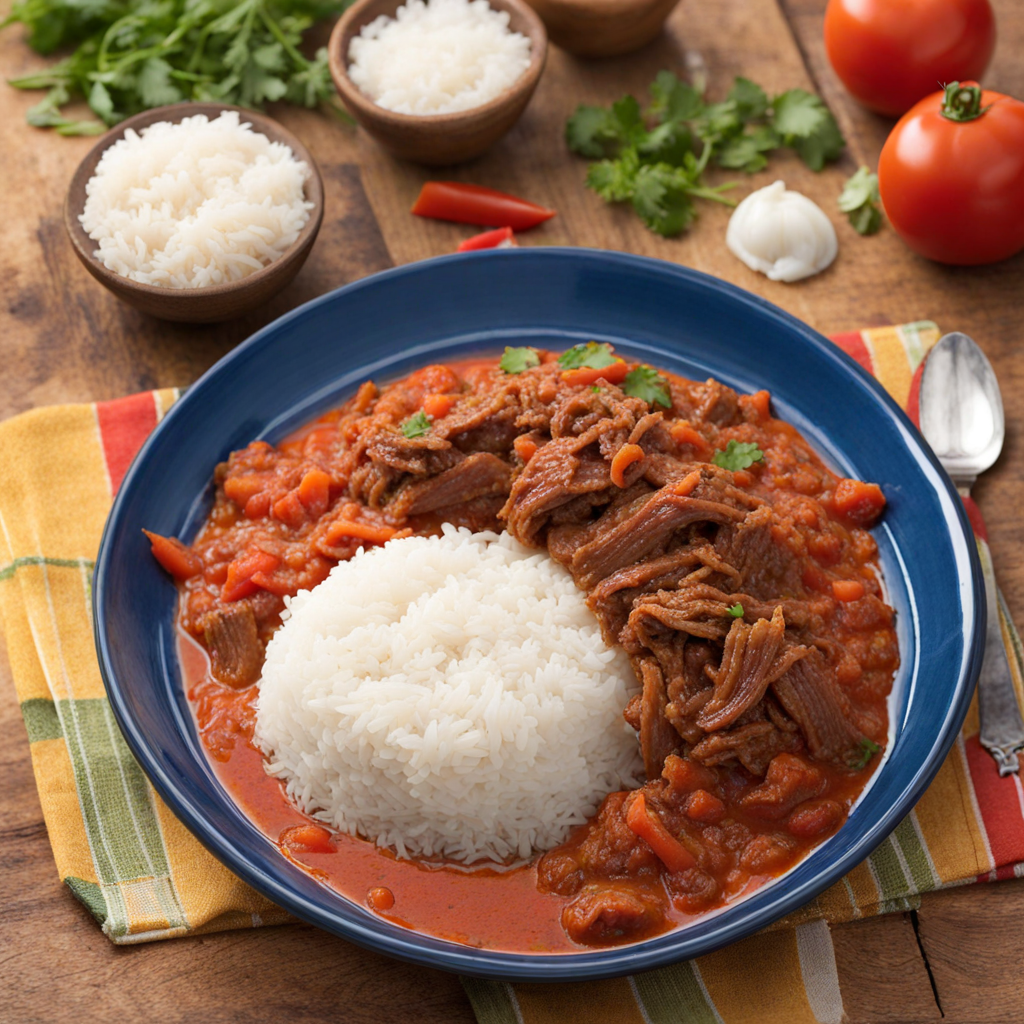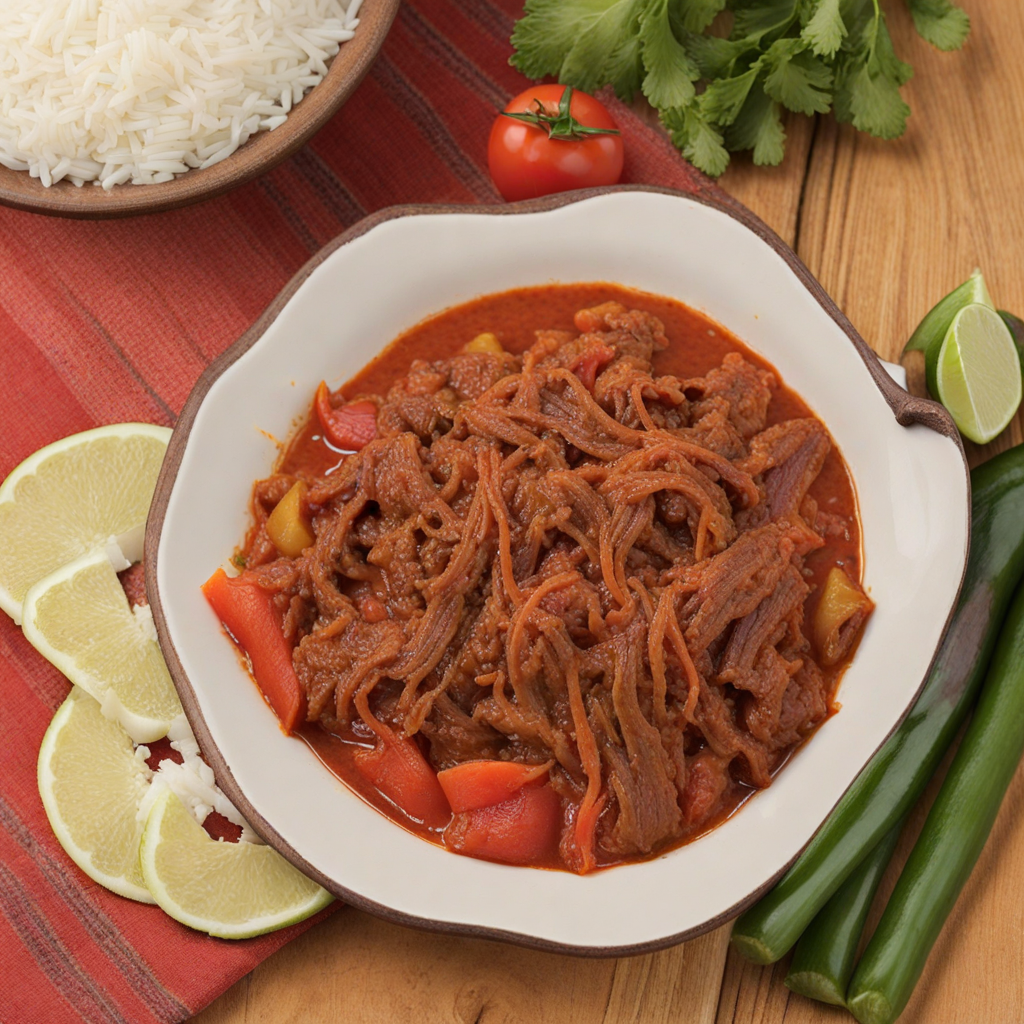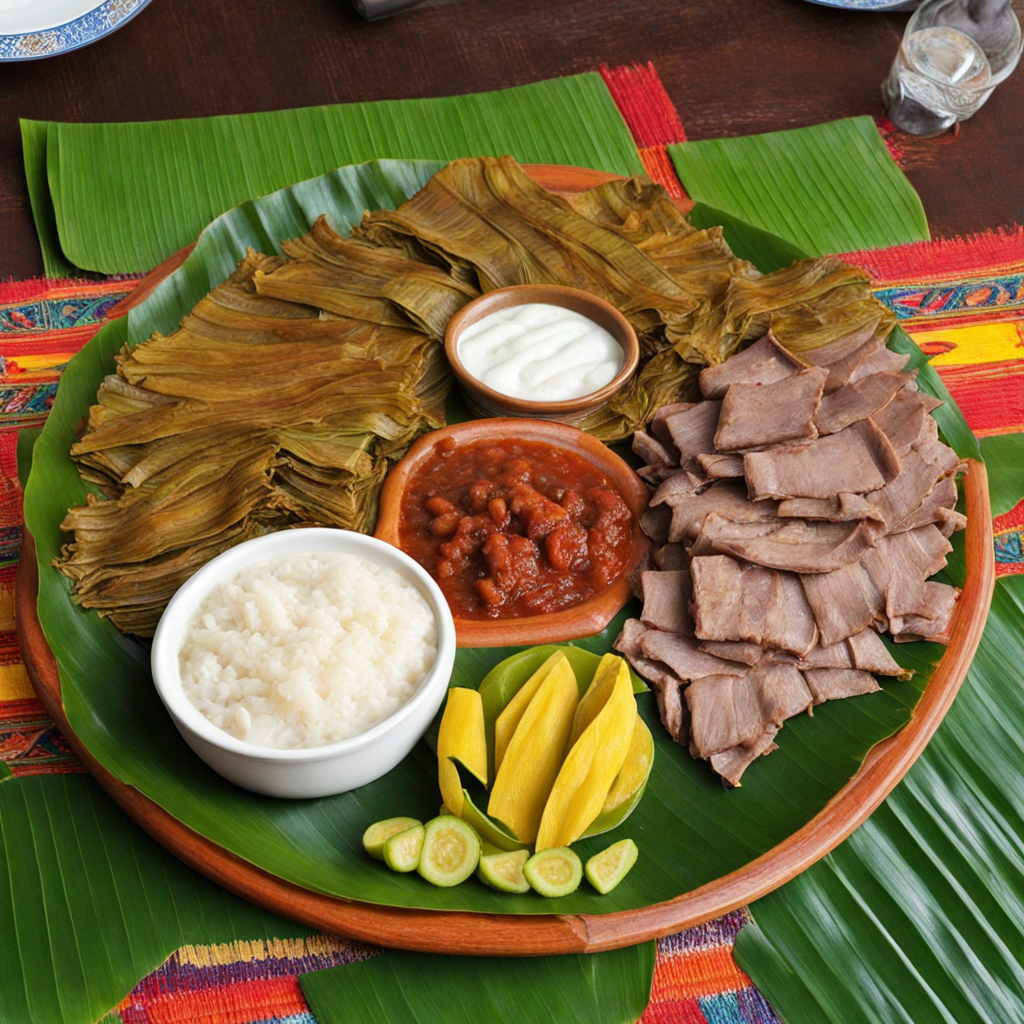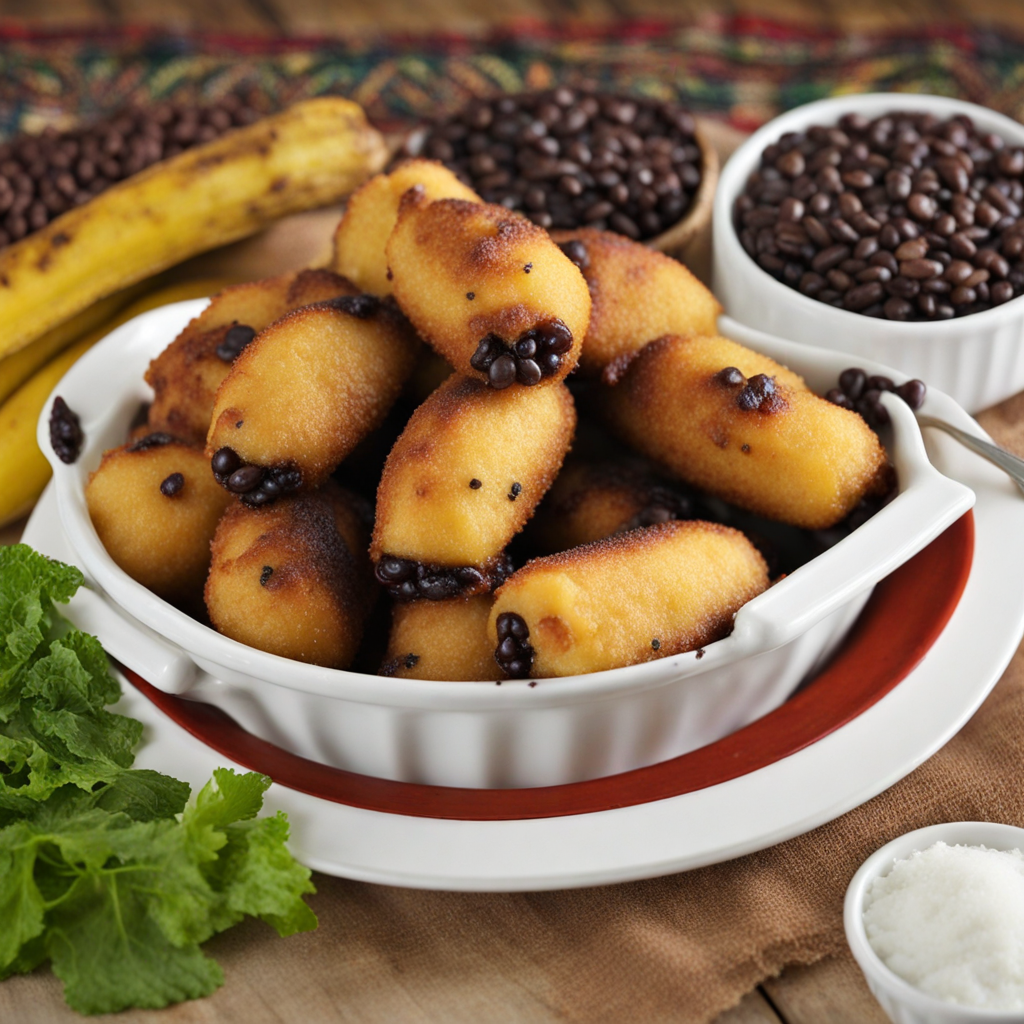Hilachas
Hilachas is a traditional Guatemalan dish that embodies the rich flavors and culinary heritage of the region. This savory meal typically features tender, shredded beef that has been slow-cooked until it reaches a melt-in-your-mouth consistency. The beef is then bathed in a vibrant sauce made from a blend of tomatoes, peppers, and spices, giving it a deep, robust flavor profile that is both comforting and satisfying. The sauce is often enriched with a hint of garlic and onion, providing a fragrant base that elevates the dish and makes it irresistible. Accompanying the hilachas is usually a side of warm tortillas, which are perfect for scooping up the tender meat and sauce. This combination creates a delightful balance of textures, where the soft, pliable tortillas complement the hearty beef. Additionally, it’s common to serve hilachas with a side of rice, which absorbs the flavorful sauce and adds a filling element to the meal. The dish is often garnished with fresh cilantro or avocado, adding a refreshing contrast to the rich flavors. Hilachas is not just a meal; it’s an experience that reflects the warmth and hospitality of Guatemalan culture. Often enjoyed during family gatherings and special occasions, this dish brings people together over a shared love of hearty, homemade food. With each bite of hilachas, you can savor the layers of flavor that tell a story of tradition, making it a perfect choice for anyone looking to explore the authentic tastes of Guatemala.
How It Became This Dish
Hilachas: A Flavorful Journey Through Guatemalan Heritage In the heart of Central America lies Guatemala, a country rich in history, culture, and gastronomic delights. Among its many traditional dishes, hilachas stands out as a beloved staple that embodies the essence of Guatemalan culinary heritage. This dish is not merely food; it is a narrative of the country’s past, a tapestry woven with indigenous roots, colonial influences, and the vibrant traditions that define contemporary Guatemalan society. Origins of Hilachas The origins of hilachas can be traced back to the indigenous cultures of Guatemala, particularly the Maya civilization, which flourished long before the arrival of Spanish colonizers in the early 16th century. The Maya had a profound understanding of agriculture and a deep connection to the land, cultivating staple crops such as corn, beans, and chili peppers. These ingredients became the backbone of their diet, and many traditional dishes, including hilachas, are built upon this foundation. The term "hilachas" itself is derived from the Spanish word "hilar," meaning "to thread" or "to unravel," which reflects the dish's composition—shredded beef that is simmered in a rich, spicy sauce. The meat is typically prepared from cheaper cuts, like flank or brisket, which, when cooked slowly, become tender and flavorful. The Guatemalan version of hilachas has evolved over time, integrating various elements from both indigenous and Spanish cuisines. Cultural Significance Hilachas is more than just a meal; it is a dish that represents familial bonds and communal gatherings. In Guatemala, food plays a central role in social and cultural life. Hilachas is often served during family celebrations, holidays, and community events, where the act of sharing a meal fosters connection and unity. The preparation of hilachas can be a communal affair, with family members coming together to cook and enjoy the dish, reinforcing traditions and strengthening relationships. Moreover, hilachas reflects the broader cultural identity of Guatemala. The dish embodies the fusion of indigenous ingredients and culinary techniques with Spanish influences—an emblem of the country’s complex history. This blend of cultures is evident in the use of tomatoes, peppers, and spices, which were introduced by the Spanish, alongside the indigenous staples that have been a part of the Guatemalan diet for millennia. Development Over Time As Guatemala navigated through centuries of change, so too did hilachas. The Spanish colonization introduced new cooking methods and ingredients, which were adapted by the local population. The incorporation of tomatoes, garlic, and spices like cumin into the hilachas sauce illustrates this culinary evolution. Over time, the dish became a symbol of resilience, embodying the ability of the Guatemalan people to adapt and thrive amid external influences. In the 19th and 20th centuries, as Guatemala experienced political upheaval and social change, hilachas remained a constant in the lives of many Guatemalans. The dish adapted to the changing economic landscape, often utilizing less expensive cuts of meat and seasonal vegetables, making it accessible to a wider population. This adaptability ensured that hilachas remained a staple in both urban and rural areas, transcending class and geography. The introduction of global culinary trends in the late 20th century also impacted how hilachas was perceived and prepared. While traditional recipes remained cherished, modern interpretations began to emerge. Chefs and home cooks alike experimented with new ingredients and presentation styles, blending traditional flavors with contemporary techniques. This evolution helped hilachas gain recognition beyond Guatemala, allowing it to find a place on menus in restaurants around the world, showcasing the richness of Guatemalan cuisine to an international audience. Contemporary Hilachas Today, hilachas is often served with rice, tortillas, or mashed potatoes, providing a hearty and satisfying meal. The dish is typically accompanied by a side of pickled vegetables or a fresh salad, adding a refreshing contrast to the rich, savory flavors of the sauce. In Guatemalan households, hilachas may be prepared in various ways, with families passing down their unique recipes and cooking techniques through generations, ensuring that the dish retains its cultural significance. In recent years, as there has been a growing interest in traditional and indigenous foods globally, hilachas has gained recognition as a dish worthy of exploration. Food enthusiasts are drawn to its robust flavors and the story it tells about Guatemala's rich cultural tapestry. Culinary festivals and events celebrating Central American cuisine have further elevated the profile of hilachas, inviting chefs to showcase their interpretations of this classic dish. Moreover, the rise of social media has enabled a new generation of Guatemalans to share their culinary heritage with the world. Platforms like Instagram and TikTok have become avenues for home cooks and chefs to showcase traditional recipes, including hilachas, often accompanied by personal anecdotes that highlight the dish's significance in their families and communities. Conclusion Hilachas is more than just a dish; it is a testament to Guatemala's rich cultural heritage and the resilience of its people. From its indigenous roots to the influences of colonialism and modern culinary trends, hilachas has evolved while remaining a beloved staple in Guatemalan cuisine. Its preparation and enjoyment continue to foster connections among families, making it a vessel for storytelling and tradition. As we savor a plate of hilachas, we partake in a historical and cultural journey that transcends generations. Whether enjoyed at a family gathering, a local eatery, or a fine dining establishment, hilachas invites us to appreciate the flavors of Guatemala and the rich narratives that accompany them, ensuring that this cherished dish remains a vibrant part of Guatemalan identity for years to come.
You may like
Discover local flavors from Guatemala







